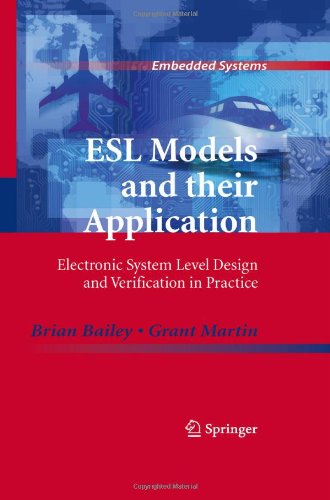

Most ebook files are in PDF format, so you can easily read them using various software such as Foxit Reader or directly on the Google Chrome browser.
Some ebook files are released by publishers in other formats such as .awz, .mobi, .epub, .fb2, etc. You may need to install specific software to read these formats on mobile/PC, such as Calibre.
Please read the tutorial at this link: https://ebookbell.com/faq
We offer FREE conversion to the popular formats you request; however, this may take some time. Therefore, right after payment, please email us, and we will try to provide the service as quickly as possible.
For some exceptional file formats or broken links (if any), please refrain from opening any disputes. Instead, email us first, and we will try to assist within a maximum of 6 hours.
EbookBell Team

5.0
108 reviewsESL Models and their Application: Electronic System Level Design and Verification in Practice
Grant Martin
Brian Bailey
This book arises from experience the authors have gained from years of work as industry practitioners in the field of Electronic System Level (ESL) design and verification. At the heart of all things related to Electronic Design Automation (EDA), the core issue is one of models: what are the models used for, what should the models contain, and how should they be written and distributed. Issues such as model interoperability and transportability become central factors that may decide which models and tools are successful and those that cannot get sufficient traction in the industry to survive.
Through a set of real examples taken from recent industry experience, this book distills the state-of-the-art of System-Level models and provides practical guidance to readers that can be put into use. This book is an invaluable tool that will aid readers in their own designs, reduce risk in development projects, expand the scope of design projects, and improve developmental processes and project planning.
This book is a must-have for anyone needing to understand the essentials of system-level models: their purpose, their contents, and how they should be created and distributed.